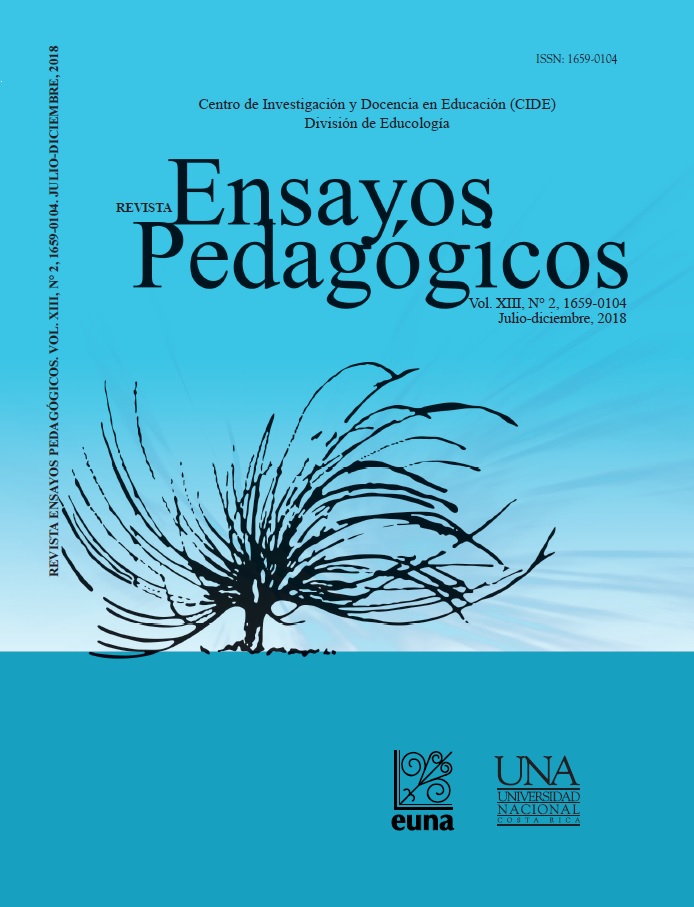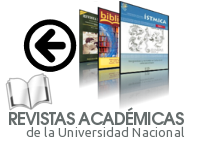Analysis of the Levels of Physical Activity of the Students, the Type of Contents of the Lesson, and the Teacher's Interaction during Physical Education in Public Schools
DOI:
https://doi.org/10.15359/rep.13-2.4Keywords:
SOFIT, physical education, primary educationAbstract
The purpose of the investigation was to describe the levels of physical activity (PA) of students of elementary schools in urban and semi-urban areas during physical education classes (PE), the context of the lesson, and teacher interactions. This was a cross-sectional observational-descriptive study of 360 students during physical education classes in first cycle in elementary schools. The System for Observing Fitness Instruction Time (SOFIT) was used to evaluate these variables. As a result, students perform less physical activity than the average recommended by the literature. Only 30.2 % and 9 % of PE lessons corresponded to activities of moderate (AMI) and vigorous (AV) intensity. Women had lower levels of PA than men, and schools in urban areas did not show more physical activity of moderate to vigorous intensity than in semi-urban areas. According to the context of the lesson, it was found that one third is devoted to administrative matters and a quarter to instruction and physical fitness. In conclusion, PA during PE classes in schools is below international recommendations.
References
Álvarez, C. (2015). Factores que influencian un estilo de vida sedentario en las estudiantes de cuarto ciclo de los colegios públicos. MHSALUD: Revista en Ciencias del Movimiento Humano y Salud, 12(1), 1-17. Doi: 10.15359/mhs.12-1.1
Álvarez, C. (2016). Entendiendo los factores que determinan la actividad física en el entorno escolar desde la perspectiva de los niños y niñas. MHSALUD: Revista en Ciencias del Movimiento Humano y Salud, 13(1), 1-17. Doi: 10.15359/mhs.13-1.2
Bassett, D. R., Fitzhugh, E. C., Heath, G. W., Erwin, P. C., Frederick, G. M., Wolff, D. L., Welch, W. A. y Stout, A. B. (2013). Estimated energy expenditures for school-based policies and active living. American Journal of Preventive Medicine, 44(2), 108-113. Doi: 10.1016/j.amepre.2012.10.017
Bevans, K., Fitzpatrick, L., Sánchez, A., Riley, A. W. y Forrest, C. (2010). Physical education resources, class management, and student physical activity levels: a structure-process-outcome approach to evaluating physical education effectiveness. Journal of School Health, 80(12), 573-580. Doi: 10.1111/j.1746-1561.2010.00544.x
Brown, T. D. y Holland, B. V. (2005). Student physical activity and lesson context during physical education. ACHPER Healthy Lifestyles Journal, 52(3/4), 17-23. Recuperado de https://www.cabdirect.org/cabdirect/abstract/20053225052
Casey, A. (2014). Models-based practice: great white hope or white elephant? Physical Education and Sport Pedagogy, 19(1), 18-34. Recuperado de https://dspace.lboro.ac.uk/dspace-jspui/bitstream/2134/19544/4/PESP%20Casey%202014.pdf
Centers for Disease Control and Prevention [CDC]. (2010). Strategies to improve the quality of physical education. En Services US Department of Health and Human Services (editor), Atlanta, Services US Department of Health and Human Services. Recuperado de https://www.cdc.gov/healthyschools/pecat/quality_pe.pdf
Dudley, D., Okely, A., Pearson, P., Cotton, W. y Caputi., P. (2012a). Changes in physical activity levels, lesson context, and teacher interaction during physical education in culturally and linguistically diverse Australian school. International Journal of Behavioral Nutrition and Physical Activity, 9(114), 2-9. Doi: 10.1186/1479-5868-9-114
Dudley, D., Okely, A., Pearson, P., Cotton, W. y Caputi., P. (2012b). Physical activity levels and movement skill instruction in secondary school physical education. Journal of Science and Medicine in Sport, 15(3), 231-237. Doi: 10.1016/j.jsams.2011.10.005
Fairclough, S. y Stratton, G. (2005). Physical activity levels in middle and high school physical education: A review. Human Kinetics Journals, 17(3), 217-236. Doi: 10.1123/pes.17.3.217
Gallahue D. L. y Ozmun, J. C. (2006). Understanding motor development: Infants, children, adolescents, adults. 6.a edición. Boston: McGraw-Hill.
Hallal, P. C., Andersen, L. B., Bull F. C., Guthlod, R., Haskell, W., Ekelund, U y Lancet Physical Activity Series Working Group. (2012). Global physical activity levels: surveillance progress, pitfalls, and prospects. The Lancet, 380(9838), 247-257. Doi: 10.1016/S0140-6736(12)60646-1
Heidorn, B. y Welch, M. M. (2010). Teaching affective qualities in physical education. Strategies, 23(5), 16-21. Recuperado de https://www.researchgate.net/publication/233522478_Teaching_Affective_Qualities_in_Physical_Education
Hemphill, S. A., Toumbourou, J. W., Smith, R., Kendall, G. E., Rowland, B., Freiberg, K. y Williams, J. W. (2010). Are rates of school suspension higher in socially disadvantaged neighbourhoods? An Australian study. Health Promotion Journal Australian, 21(1),12-18. Recuperado de https://pdfs.semanticscholar.org/ede8/2f3c401732cb8b55f3fa8fdd15e58ce8a94e.pdf
Jago, R., McMurray, R. G., Bassin, S., Pyle, L., Bruecker, S., Jakicic, J. M., Moe, E., Murray, T. y Volpe, S. L. (2009). Modifying middle school physical education: piloting strategies to increase physical activity. Pediatric Exercise Science, 21(2), 171-185. Recuperado de https://www.ncbi.nlm.nih.gov/pmc/articles/PMC2705879/
Lonsdale, C., Rosenkranz, R. R., Peralta, L. R., Bennie, A., Fahey, P. y Lubans D. R. (2013). A systematic review and meta-analysis of interventions designed to increase moderate-to-vigorous physical activity in school physical education lessons. Preventive Medicine Journal, 56(2),152-161. Doi: 10.1016/j.ypmed.2012.12.004
Lox, C., Martin, K. y Petruzzello, S. (2006). The Psychology of Exercise: Integrating Theory and Practice. 4.a edición. Arizona, Estados Unidos: Holcomb Hathaway Publishers.
McClain, J., Abraham, T., Brusseau, T. A. y Tudor-Locke, C. (2008). Epoch length and accelerometer out-puts in children: comparison to direct observation. Medicine & Science in Sports & Exercise, 40(12), 2080-2087. Doi: 10.1249/MSS.0b013e3181824d98
McKenzie, T. L., Catellier, D. J., Conway, T., Lytle, L. A., Grieser, M., Webber, L. A., Pratt, C. y Elder, J. (2006). Girls’ activity levels and lesson contexts in middle school PE: TAAG Baseline. Medicine & Science in Sports & Exercise, 38(7),1229-1235. Doi: 10.1249/01.mss.0000227307.34149.f3
McKenzie, T. L. (2009). Seeing is believing: Observing physical activity and its contexts. Research Quarterly for Exercise and Sport, 81(2), 113-122. Recuperado de http://thomckenzie.com/useful-tools/observation/
McKenzie, T. L. (2012). SOFIT: System for observing fitness instruction time. Overview and training manual. Recuperado de https://activelivingresearch.org/sites/default/files/SOFIT_Protocols_05.01.15.pdf
McKenzie, T. L., Marshall, S., Sallis, J. y Conway, T. (2000). Student activity levels, lesson context, and teacher behavior during middle school physical education. Research Quarterly for Exercise and Sport, 71(3), 249-259. Doi: 10.1080/02701367.2000.10608905
McKenzie, T. L., Feldman, H., Woods, S. E., Romero, K. A., Dahlstrom, V., Stone, E. J., Strikmiller, P. K., Williston, J. M. y Harsha, D. W. (1995). Children's activity levels and lesson context during third-grade physical education. Research Quarterly for Exercise and Sport, 66(3), 184-193. Doi: 10.1080/02701367.1995.10608832
Ministerio de Educación Pública de Costa Rica [MEP]. (2013). Programas de Estudio de Educación Física. San José, Costa Rica: MEP. Recuperado de http://www.mep.go.cr/sites/default/files/descargas/programas-de-estudio/educfisica3cicloydiversificada.pdf
Organización de la Naciones Unidas [UNESCO]. (2015). Educación Física de Calidad (EFC). Guía para los responsables políticos. Paris, Francia. Recuperado de http://unesdoc.unesco.org/images/0023/002313/231340S.pdf
Rowe, P. J., Schuldheisz, J. M., van der Mars, H. (1997). Measuring physical activity in physical education: Validation of the SOFIT direct observation instrument for use with first to eighth grade students. Pediatric Exercise Science, 9(2), 136-149.
Sharma, A., Lee, Y. D. y Chung, W. Y. (2011). High accuracy human activity monitoring using neural network. En Convergence and Hybrid Information Technology. ICCIT'08. Third International Conference on 1, 430-435. Doi: 10.1109/ICCIT.2008.394
Shephard, R. J. y Trudeau, F. (2000). The legacy of physical education: Influences on adult lifestyle. Pediatric Exercise Science, 12(1), 34-50. Doi: 10.1123/pes.12.1.34
Skala, K. A., Springer, A. E., Sharma, S. V., Hoelscher, D. M. y Kelder, S. H. (2012). Environmental characteristics and student physical activity in PE class: findings from two large urban areas of Texas. Journal of Physical Activity and Health, 9(4), 481-491. Recuperado de https://www.ncbi.nlm.nih.gov/pmc/articles/PMC3245768/
Springer, A. E., Kelder, S. H., Byrd-Williams, C. E., Pasch, K. E., Ranjit, N., Delk, J. E., Hoelscher, D. M. (2013). Promoting energy-balance behaviors among ethnically diverse adolescents: overview and baseline findings of The Central Texas CATCH Middle School Project. Health Education & Behavior, 40(5), 559-570. Doi: 10.1177/1090198112459516
Sutherland, R., Campbell, E., Lubans, D. R., Morgan, P. J., Okely, A. D., Nathan, N., Wolfenden, L., Jones, J., Davies, L., Gillham, K. y Wiggers, J. (2013). A cluster randomised trial of a school-based intervention to prevent decline in adolescent physical activity levels: study protocol for the ‘Physical Activity 4 Everyone’ trial. BMC Public Health, 13(1), 57. Doi: 10.1186/1471-2458-13-57
Timmons, B. W., Leblanc, A. G., Carson, V., Connor, S., Dillman, C., Janssen, I., Kho, M. E., Spence, J. C., Stearns, J. A. y Tremblay, M. S. (2012). Systematic review of physical activity and health in the early years (aged 0-4 years). Applied Physiology, Nutrition, and Metabolism, 37(4), 773-92. Doi:10.1139/h2012-070
Ward, D., Saunders, R. y Pate, R. (2007). Physical Activity Interventions in Children and Adolescents. USA: Human Kinetics Publishers.
Published
How to Cite
Issue
Section
License
Ensayos Pedagógicos is subscribed to the Attribution-NonCommertial-NoDerivatives 4.0 International Creative Commons Licence, which allows both authors and readers to freely download, store, copy, and distribute the final approved publisehd version of the manuscript (post-print) as long as this is done without commercial purposes, no derivative works are generated, and the source and author are mentioned. As well, Ensayos Pedagógicos declares that authors will remain the rightful owners of the copyrights of their work in perpetuity.







